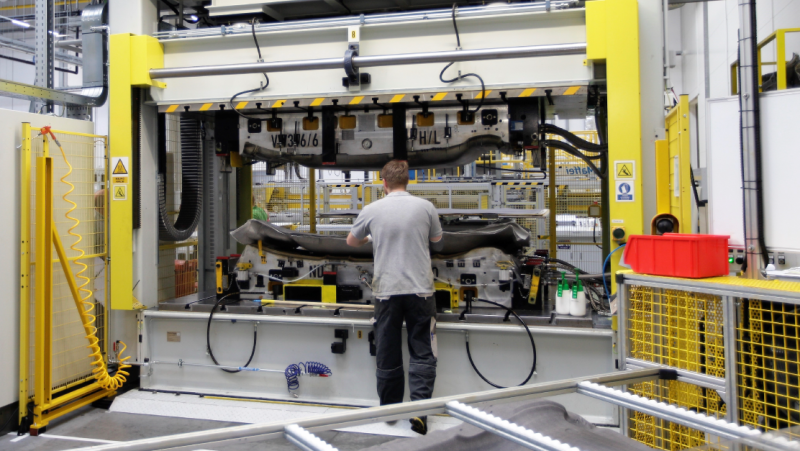4 Development Phases Towards Digital Factory
- Digital Factory
- Article
Many manufacturing companies have already been performing digitalisation activities for quite a long time now. In the past they invested into manufacturing equipment and warehouses, which today are commonly controlled by advanced software. Now they have access to new possibilities, greater computing power, cheaper data storage and more accessible IoT equipment and smart sensors that will enable a rapid growth in digitalisation activities.
The main difference relative to the past is the pace of change that digital transformation is going through. McKinsey Global Institute estimates that by 2025, IoT applications in factories may produce a value of 1.2–3.7 trillion dollars worldwide every year.
Four development phases
Some time ago, Aimtec presented its concept named the Digital Factory. It contains four development phases that a manufacturing company should undergo on its way to a successful digital transformation.
- In the first phase the company should concentrate on the collection of data throughout logistics and production, thus creating a complete digital image of itself. This data is collected directly from machines and equipment using sensors, the IoT or mobile devices.
- In the second phase the data sources are logically interconnected and integrated with company back-end systems. The individual activities are monitored and controlled based on data outputs from prior operations. The goal here is a horizontal integration of all the company’s processes, from materials receipt on out to the shipping of the final product.
- The third phase is a vertical integration of the collected data, analysis of it and creation of reports and process visualisations. The results of these data analyses help to eliminate process inefficiency – to optimise it away – while the graphical outputs serve as the foundation for decision-making by top management.
- The fourth phase is the final one. The equipment and systems themselves perform process optimisation based on collected big data. The machines teach themselves and autonomously make decisions and change settings. The processes are managed digitally throughout the company.
Data safely in the right place and error-free
Integrations among machines, systems, databases and applications interweave every phase of digitalisation. At first this primarily involves the simple delivery of data from one place to another, while later, logic reflecting the complexity of the company’s business processes is added. Data from a variety of sources is combined, transformed and evaluated. As the company becomes more digital, integrations like these will become so numerous and variegated that a proper integration strategy will need to be chosen. There are essentially two roads that can be taken here:
- We can build integration logic inside of specialised systems that are responsible for a certain area – ERP, MES, WMS etc. In this case the integration logic is distributed, linked to the given system and placed under the control of the specialists for the given segment. This solution is primarily useful for smaller companies or those whose manufacturing processes are not too interconnected.
- The second solution is to use an integration platform. Such a platform can produce integration outside of individual systems and is independent of them. The advantages here are the use of a single, unified technology and the company’s access to a complete data-flow overview. This makes it easier for the company to retain control over its critical data and keep it safe. Standard security elements and approaches are used and are a part of most solutions. This route is useful for companies that have a large number of systems and data sources or whose production is made up of a large number of interconnected manufacturing processes.
We always expect the same things from digitalisation – an increase in productivity, a minimisation of the error rate and a reduction of manufacturing costs. In the near future, the deployment of new manufacturing technologies into production will help towards this end; these include digital manufacturing and quality control, predictive maintenance and the involvement of robots in production processes. Behind all of these models there is a need to transfer enormous quantities of data. No matter what integration strategy you choose, the result should always be the same: data safely stored in the correct place, in the required format, without errors and, if possible, under monitoring. This is the only way to perform a digital transformation successfully.
Share article
Top stories from logistics, production and IT.
Subscribe to Aimtec Insights
By registering, you agree to the processing of your personal data by Aimtec as described in the Privacy policy.
Get top stories and articles
from Logistics, Production and IT.
Subscribe to Aimtec Insights
By registering, you agree to the processing of your personal data by Aimtec as described in the Privacy policy.







